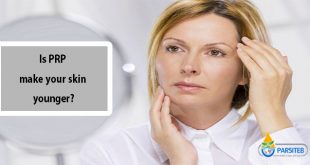What are the different types of common skin rashes?
Whether it is used by patients or doctors, the word rash does not have an exact meaning or refer to a specific disease or kind of disorder. It’s a general term that means an outbreak of bumps on the body that changes the way the skin looks and feels. Rashes can be localized to one area or else be widespread. The way people use this term, a rash can refer to many different skin conditions. Common categories of rash are
* scaly patches of skin not caused by infection,
* scaly patches of skin produced by fungal or bacterial infection,
* red, itchy bumps or patches over the body, such as on the chest and back.
Although rashes are seldom dangerous, self-diagnosis is not usually a good idea. Proper evaluation of a skin rash requires a visit to a doctor or other health-care professional. The following guidelines may help you decide what category your rash falls into.
Scaly patches of skin not caused by infection
Scaly, itchy skin patches often represent one of the conditions referred to as eczema.
Atopic dermatitis: Atopic dermatitis is perhaps the most common form of eczema. This is a hereditary skin problem that often begins in childhood as chapped cheeks and scaly patches on the scalp, arms, legs, and torso. Later in childhood, atopic dermatitis may affect the inner aspects of the elbows and knees. Adults get atopic dermatitis on the hands, around the eyelids, on the genitals, as well as on the body as a whole.
The word dermatitis means inflammation of the skin. Atopic refers to diseases that may be associated with allergies and tend to run in families. Atopic diseases include asthma, hay fever, and atopic dermatitis. In fact, people may refer to what doctors call eczema as “allergic skin.” In fact, however, patients with atopic dermatitis may have allergies, but most cases of atopic dermatitis are not themselves allergic.
Eczema comes and goes on its own schedule and is not related to the allergy usual suspects — foods, soaps, and detergents — which may be blamed for flare-ups. In most cases, changing diet and detergents helps eczema very little.
Atopic dermatitis is often worse in the winter months, when the air is cold and dry, so that frequent washing may irritate the skin and aggravate the condition. Although the skin feels “dry,” it really isn’t; it is inflamed, and therefore moisturizing alone does not help much. The rash of some patients with atopic dermatitis, however, becomes worse in the summer, while others experience no significant seasonal variation. At times, eczema can be especially troublesome for one or more years, only to largely subside for extended periods afterward and require little treatment and attention.
Skin affected by atopic dermatitis becomes extremely itchy and inflamed. It may look red, swollen, and cracked. In some cases, the skin can also weep and crust. This is especially true in infants and children. Liquid that oozes out of such crusts is often not infected; what comes out is the body’s normal tissue fluid. Treatment specific for eczema is helpful, not antibiotics.
Patches of atopic dermatitis may appear on various parts of the body, but the condition is not contagious. It may appear off and on throughout life, but there may be long intervals between outbreaks. Also, the condition does not get progressively worse with age; if anything, it is most extensive during childhood.
Treatment of eczema involves minimizing irritation if that is contributing to the problem and using prescription-strength steroids (cortisone creams). Milder ones are best for children and sensitive parts of the body (face, groin); these include hydrocortisone in its over-the-counter strengths of 0.5% and 1% as well as higher concentrations that need a prescription. In adults and on thicker-skinned areas (trunk, arms, legs), more potent cortisone (steroid) preparations are safe and useful. Some of these include triamcinolone 0.1% (Triamcinolone), fluocinonide 0.05% (Lidex), and clobetasol 0.05% (Temovate).
Nonsteroidal creams like tacrolimus (Protopic) and pimecrolimus (Elidel) have become less popular both because of relative lack of effectiveness and concerns about safety. Tap water soaks with Burow’s solution (available without prescription) can help dry up atopic dermatitis in its oozy stages.
Contact dermatitis: Contact dermatitis is a rash that is brought on either by contact with a specific material that causes allergy on the skin or with something that irritates the skin, like too-frequent hand washing.
Common examples of contact dermatitis caused by allergy are poison ivy or poison oak (same chemical, different plant) and reactions to costume jewelry containing nickel. With occasional exceptions, allergic contact dermatitis affects just those parts of the skin touched by whatever material causes the allergy, as opposed to atopic dermatitis, which can be widespread because, as explained above, it is not an allergy to a specific substance.
Treatment of contact dermatitis involves avoiding the allergen that caused it, if there is one, or minimizing whatever exposure is irritating the skin (water on the hands, solvents at work, saliva around the mouth from lip licking). Effective treatments include topical steroids, including over-the-counter 1% hydrocortisone and many prescription-strength creams. Here, too, nonsteroidal creams like tacrolimus and pimecrolimus are used less than they once were. Tap water soaks with Burow’s solution can help dry up oozy contact dermatitis as well.
There are of course many other scaly rashes. Two worth mentioning are psoriasis, a hereditary condition affecting elbows, knees, and elsewhere, and pityriasis rosea, which primarily affects teens and young adults, producing scaly patches on the chest and back and generally disappearing in about a month. Xerosis, very dry skin, may also appear as a rash during the cold, dry months of the year.
 Parsi Teb Physical and Mental Health Journal
Parsi Teb Physical and Mental Health Journal 

![RF [Radiofrequency treatment] (Part II)](https://en.parsiteb.com/wp-content/uploads/2019/08/parsi_teb-RF-Radiofrequency_treatment_2-310x165.jpg)

